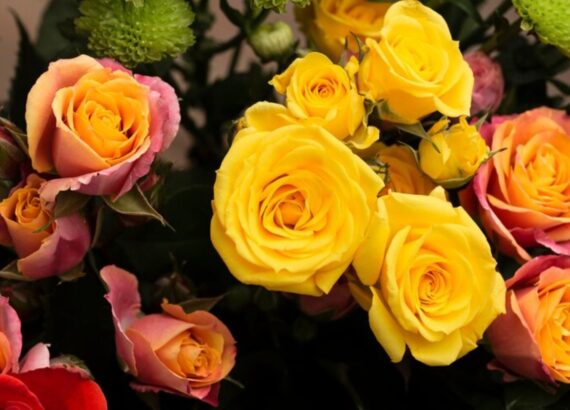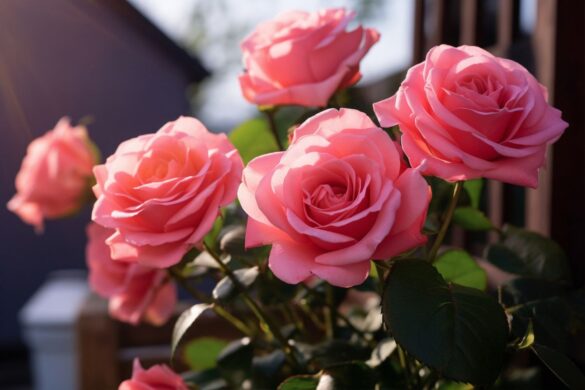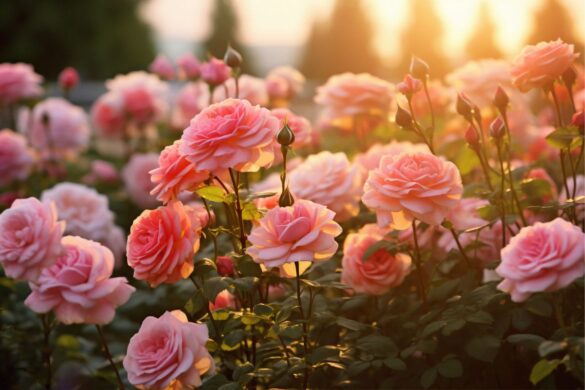Mastering Ranunculus Care: Tips for Abundant Blooms

Introduction
Ranunculus flowers are immensely popular among gardening enthusiasts and flower lovers due to their abundant, delicate petals and vibrant color variations. They serve as cherished additions to both gardens and exquisite floral arrangements. As spring approaches, gardeners eagerly anticipate the emergence of these exquisite blooms, which originate from a subterranean structure known as a corm. Determining the number of ranunculus flowers that will bloom from each corm is a complex endeavor, contingent upon various factors that influence the floral output. In this article, we’ll explore how to make ranunculus flowers grow abundantly and what factors affect the number of flowers from each corm.
What are Ranunculus Corms?
Ranunculus corms are subterranean structures that serve as the origin of Ranunculus flowers. These corms are essentially bulb-like, containing the essential nutrients and energy required for the growth and development of these beautiful blooms. They act as storage units, housing the resources needed for the Ranunculus plant to produce its vibrant, delicate petals. When spring approaches, these corms come to life, sprouting into Ranunculus plants and giving rise to the delightful blossoms that gardeners and flower enthusiasts eagerly anticipate.
The Corm’s Growth Cycle
A ranunculus corm goes through various stages before turning into a beautiful flower. At first, it rests and saves energy. When conditions improve, it starts growing roots and shoots. The corm’s stored food is vital in the beginning until the plant can make its own food using sunlight. Knowing this helps us take good care and create the right conditions for more ranunculus flowers from each corm.
Factors Influencing Flower Production
- Corm Size and Quality
The size and quality of the ranunculus corm matter a lot in how many flowers it can make. Bigger corms usually mean more and bigger flowers. When you get good corms from trusted places, you’re likely to have lots of beautiful ranunculus flowers. - Growing Conditions
For the best flower growth, you need the right conditions. That means enough sunlight, the right temperature, and soil that lets water pass through easily. When these things are in place, your ranunculus plants are all set to make lots of lovely flowers. - Planting Depth
Getting the planting depth just right is important. If you plant the corms too deep or too shallow, it can affect how many flowers they produce. Planting at the right depth ensures they have access to the soil, moisture, and nutrients they need. - Watering and Irrigation
Watering your ranunculus is crucial for getting lots of flowers. You need to water them carefully, making sure the soil isn’t too wet, and that excess water can drain away. Giving the corms the right amount of water, not too much, helps them grow well and produce plenty of flowers.
Expected Number of Flowers
Each ranunculus corm may make a different number of flowers. This depends on factors like corm size, health, how they’re grown, and care. Keep in mind that not every corm will produce the same number of flowers. By taking good care of your corms, you can help each one produce as many flowers as possible. While it’s hard to predict the exact number, gardeners can learn from tips and experiences. With great care, you can enjoy a beautiful bunch of ranunculus flowers.
Ranunculus: Multiple Flowers on a Single Stem
Ranunculus plants are celebrated for their unique ability to produce several flowers on a single stem, adding a captivating charm to gardens and bouquets with their vibrant colors. Belonging to a group of over 600 wild and cultivated varieties, ranunculus is distinctive in creating delicate layers of thin petals, resembling a small bouquet on one stem.
These flowers come in a range of colors, including red, pink, orange, yellow, and white, known for their intricate and lush appearance. This makes ranunculus a popular choice for special occasions and space enhancement.
Caring for ranunculus requires the right conditions, such as well-draining soil, ample sunlight, and controlled watering. Grown from corms, similar to flat bulbs, with proper planting and care, they can produce numerous flowers on each stem.
While ranunculus is known for its multifold blooms, other bulbous plants like tulips or daffodils typically yield a single flower stem per bulb. Nevertheless, ranunculus bulbs frequently produce multiple flowers on one stem, making them a favorite among gardeners and flower enthusiasts, offering the delight of several blooms from a single bulb.
Maximizing Ranunculus Blooms: Practical Tips
Achieving an abundant display of ranunculus blooms can be a rewarding endeavor. Here are some practical tips to help you make the most of your ranunculus plants:
- Selecting the Best Corms
Start with a strong foundation by choosing corms of optimal size and quality. Larger, healthy corms from trusted sources are more likely to yield abundant flowers. - Ideal Growing Conditions
Create the right environment by ensuring your ranunculus plants receive adequate sunlight, experience appropriate temperatures, and are planted in well-draining soil. These conditions encourage robust growth and increase flower production. - Planting Depth and Spacing
Plant corms at the recommended depth to provide access to essential nutrients and moisture. Proper spacing prevents competition for resources and allows each plant to flourish. - Consistent Watering
Maintain a regular watering schedule to keep the soil consistently moist but not waterlogged. Proper hydration supports healthy corm development, leading to more flowers. - Balanced Nutrition
Provide corms with balanced fertilizers rich in nutrients like nitrogen, phosphorus, and potassium. Ensuring the right nutrients at the right times promotes vigorous growth and a higher number of blooms. - Regular Deadheading
Remove spent flowers promptly to encourage continuous blooming. Deadheading redirects the plant’s energy toward new flower production, resulting in an extended and vibrant display. - Pest and Disease Management
Keep a close eye on potential pests and diseases that can hinder flower production. A healthy plant is more likely to produce an abundance of blooms, so take preventative measures to maintain plant health. - Patience and Observation
Recognize that flower production is a gradual process. Observe your ranunculus plants closely, noting their response to your care practices. As you patiently continue your efforts, you’ll witness a gradual increase in the number of blooms.
By following these practical tips, you can create an environment that empowers your ranunculus corms to reach their full flowering potential, resulting in a magnificent and picturesque garden display.
Conclusion
In the world of gardening, the question of how many ranunculus flowers each corm will yield is an exciting journey of discovery and care. While the exact number of flowers depends on various factors, the real secret to a stunning display lies in understanding the intricate process.
From the humble corms nestled beneath the soil to the delicate petals that grace our gardens, every element plays a vital role in their growth. As gardeners, we serve as both students and conductors in a botanical orchestra. By considering corm size, quality, growth techniques, and proper care, we empower our ranunculus plants to flourish.
It’s important to note that not all corms produce the same number of flowers. However, by creating the right conditions, we can work alongside nature to achieve something remarkable. While we may not predict the exact flower count from each corm, nurturing these plants and witnessing their transformation is a rewarding experience.
With patience, dedication, and a dash of gardening intuition, we can cultivate a garden adorned with these special flowers. As you embark on your ranunculus journey, remember that, while numbers matter, the true magic lies in the beauty that graces your garden – a testament to your gardening prowess.








No Comments